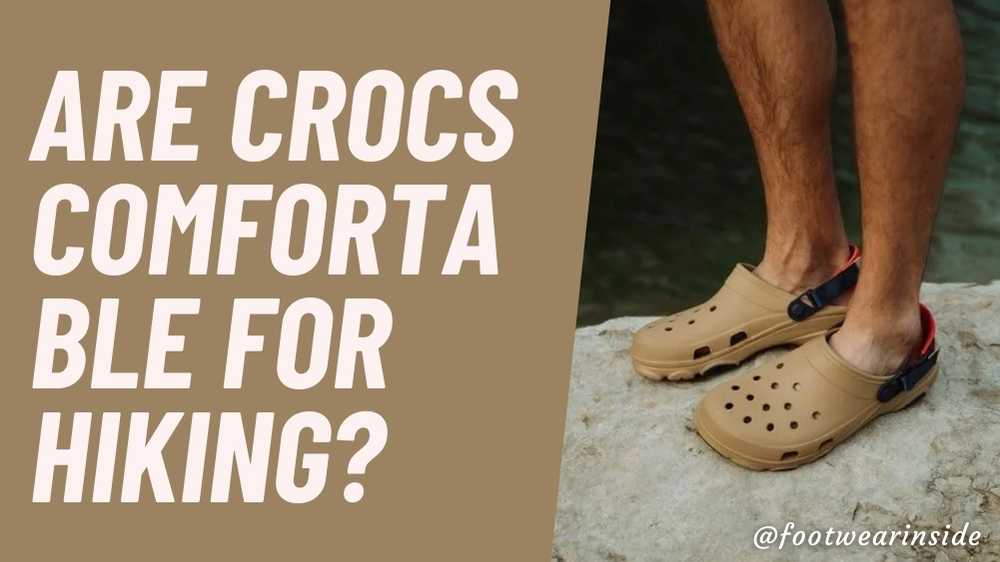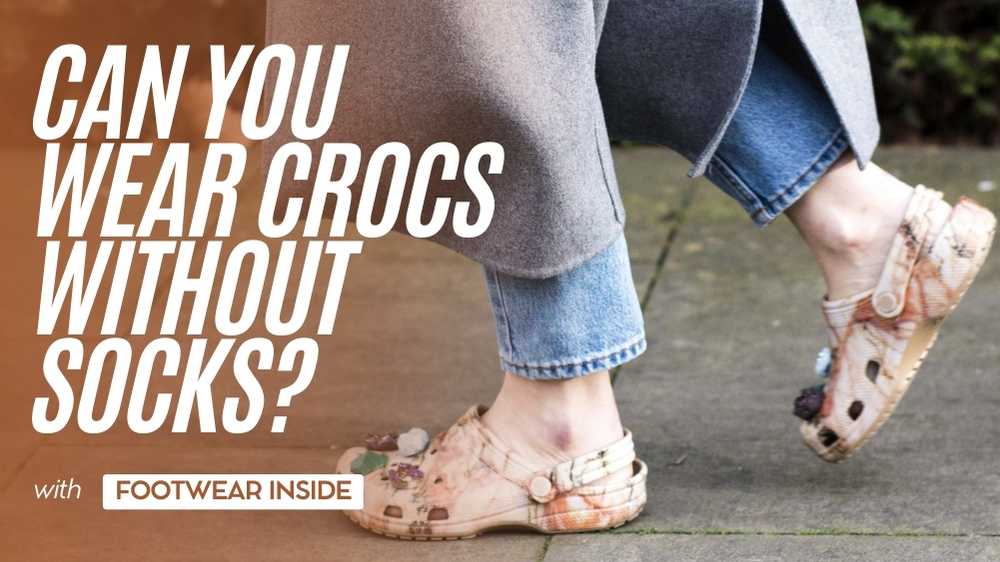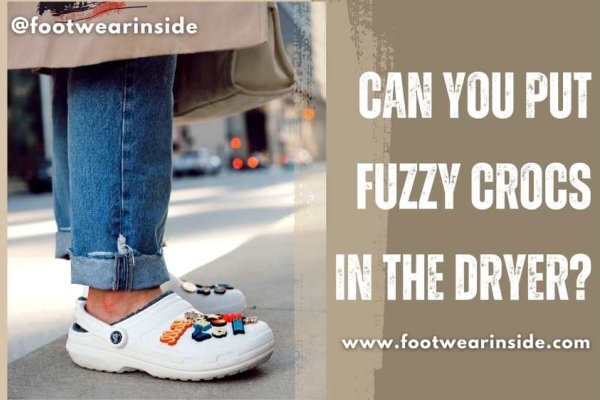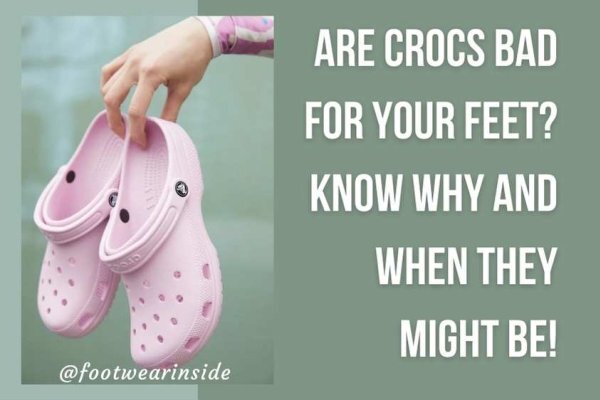How to prevent blisters from crocs? First, choose a true-to-size croc for snug feet. Next, push the straps backward into sports mode. Then, try to wear socks to get extra protection. Finally, apply a blister blocker balm or moleskin padding before wearing crocs.

Last month, I was suffering from blisters on my feet. It happened as I was wearing the crocs straps in a relaxed mode. My friend suggested wearing crocs straps in sports mode to avoid rubbing or chafing. Also, using blisters blocker balm with moleskin padding eliminated this issue quickly.
Crocs can cause blisters in certain situations, but choosing a perfectly fitted croc can reduce the possibility of blisters. Still, confused about wearing crocs? Go through our detailed guide to clarify quickly and prevent blisters with comfortable walking for hours!
Why Do Crocs Cause Blisters?
Crocs can cause blisters when the shoes don’t fit accurately, the Washington Post claimed as well. In fact, the leading cause of blister is the friction of shoes with the skin. If the shoe size is too big or tight, the feet’s skin continuously rubs against the shoe, creating blisters.

When the shoe continues to generate pressure on the foot’s skin, first occurs irritation and then blisters. On the other hand, blisters can occur in a standing or walking job, where you’re wearing crocs for several hours. In fact, long-time pressure on their heels, toes, and soles causes friction and blisters.
Besides, if there is excessive moisture on the shoes, it can cause blisters. During summer, people run wearing crocs for a long time which results in a high possibility of blisters. Aside from blisters, excessive use of crocs with fungal infections, bacterial infections, or allergic reactions can cause serious issues.
Where Do Crocs Cause Blisters?
As claimed by styleandrun, crocs can cause blisters in different areas of the foot, like the inside, the top of the toe, the joint area of the big toe, and the second toe. In fact, if two toes rub against each other continuously, they cause blisters.

But, the most common area causing blisters is the inside of the foot, in the right below the ankle, where maximum rubbing and strap pivots create. Also, the big and second toe rubs frequently and creates a blister.
If the crocs are too tight, they can touch the top of the foot and scratch the skin. When the scratching continues for hours, it can end with blisters.
How to Prevent Blisters From Crocs
To prevent blisters from crocs, Dr. Rion Berg, an expert podiatrist suggests following a few tips, including picking the true-to-size crocs, setting straps in sporty mode, wearing crocs with socks, and using Blister Blocker Balm or Moleskin Padding. Let’s have a look at these tips in detail.

Pick True To Size Crocs
First, always wear true-to-size Crocs to prevent issues like blisters. Most regular shoes are a little loose, with fittings that form small pockets in the upper layers of skin. But, Crocs comes with a snug fitting that offers a comfortable walk and a roomy feel.
On top of that, the proper size of crocs resists friction between feet and shoes. Due to such a snug fit, these shoes won’t harm the skin and prevent the formation of blisters. So, always wear perfect-fit crocs for relaxed walking for hours.
Set Straps in Sport Mode
Usually, most people wear crocs straps in relaxed mode. As the relaxed mood causes constant rubbing of the shoe with your foot, it may result in issues like blisters. So, pull the heel-hugging back straps into a sports mood.
Now, the sports mood won’t leave any space and prevent feet from sliding forward to backward against shoes. Due to such a sporty design, it keeps feet in a perfect position. As a result, these shoes reduce the rubbing of feet and secure them from blisters.
Wear Socks with Crocs
While spending hours in Crocs, it is wise to wear socks to prevent blisters. Small pockets can form in the feet if you’re doing longer walking or standing shifts on a job site. As the socks work like extra layers of protection, they can resist pretty bad blisters.
In addition, wearing socks in winter keeps the feet warm and comfortable for hours. The only drawback of socks, they cause odor build-up in summer. To eliminate such issues, pick thin socks that maintain air circulation to prevent odor build-up.
Use Blister Blocker Balm
If you don’t like wearing socks, a blister blocker balm can save your day. As the anti-friction balm lasts up to 8 hours, it can keep feet safe from strap chafe, heel friction, or toe rubbing. Hence, these blocker balms help to enjoy a long day without worrying about blisters.
Moreover, Some latest blister balms include non-toxic ingredients. Due to such a natural composition, it can moisturize the feet’s skin. As a result, use the balms for the hot spots like the top of feet & below part of the feet to the lower part of ankle bones to keep feet safe & secure while walking with Crocs.
Apply Moleskin Padding
When you’re spending hours in crocs, the shoe’s straps can cause painful pressure that leads to blisters. If you use moleskin padding, it resists rubbing to prevent such pressure. As the moleskin comes with thin and flexible tape, it offers extreme cushioning and protects from rubbing.
Moreover, the soft fabric of the moleskin padding can fit the crocs to ensure comfort for a longer time. Further, this padding is easy to cut into any shape, which helps in use on any condition. It is better to use the moleskin on hot spots to avoid discomfort during a long shift.
Is It Okay To Walk Long Distances In Crocs?
Yes, Babafemi Adebajo states that crocs are okay to wear for long distances. As these shoes provide good arch support, you can wear the shoe for a long time. Besides, crocs come with a lightweight and breathable design that is convenient to wear for longer shifts.
Moreover, it is wise to pick crocksRx due to their excellent ankle and arch support. , While walking long distances, these shoes are great for reducing foot fatigue and discomfort. Also, try to improve croc’s comfort by adding customized soles to wear for extended periods.
Are Crocs Good For Crossing Water?
Yes, crocs are suitable for crossing water due to their waterproof and lightweight feature. As heavy shoes aren’t suitable for crossing water, pick a light one like crocs for safe walking. Besides, crocs have several holes in their upper section that can dry out wet feet quickly.

On top of that, some crocs like Swiftwater sandals are the best option for crossing water. In fact, these shoes suit hiking and come with closed toes for additional protection. Due to such build-up, most hikers prefer these shoes for additional arch support.
Are Crocs Comfortable For Hiking?
Yes, crocs are comfortable for hiking because of soft rubbery materials, loose-fitting features, and breathable upper. Besides, the soft rubber makes the shoe extremely lightweight, which is better for hiking.

Most people like to wear Crocs for hiking as they have excellent breathability. Also, another advantage of wearing crocs to hike is allowing cool air into the shoes in hot weather.
Further, crocs provide odor-free hiking due to their breathability. It is better to wash shoes in soapy water to prevent odor build-up. Crocs are washable, so cleaning them with soap after hiking takes only a few seconds.
Are Crocs Good For The Outdoors?
Yes, as crocs are breathable, comfortable, and work great on a wet surface, they suit the outdoors. Besides, the lightweight design with excellent arch support offers a relaxing experience on the road. Again, the material can absorb sweat quickly. Hence, you can comfortably wear them in hot weather without odor.

On top of that, the shoes have several holes in the upper part, allowing the best breathability while walking. Even such holes are great for air flowing inside the boots. Moreover, most users prefer crocs due to their lightweight features and enjoy comfy wearing for an extended time.
Can You Wear Crocs Without Socks?
Yes, crocs are comfortably wearable without socks. Basically, crocs can wear them with or without socks. It is better to wear crocs with socks in the winter and avoid socks in the summer. Due to their roomy toe box, any sock can fit with the shoes.

Regarding comfort, crocs without socks are acceptable. When you wear crocs with a sock for a long time, the feet will sweat because of its rubber material. That’s why avoid cotton socks to get rid of this issue. Also, we suggest wearing woolen socks for long walks.
Is It Better For Crocs To Be Tight Or Loose?
According to Crocs, the shoes shouldn’t be too tight or loose. In fact, standard fits are better for crocs as it is more snug than roomy or relaxed. As a result, these fittings keep feet secure with the shoe and never slip while walking.
Moreover, crocs are well-known for their loose design but are well-fitted. Even the fitting is comfortable as they are lightweight and built with croslite material. Also, the loose-fitting design offers a safe distance between toes and shoes. Thus, the toe can’t touch the shoes and keep the toes blister-free.
Are Crocs Good For Walking All Day?
Yes, crocs are suitable for walking all day as they are lightweight and convenient. Due to their excellent arch support, they provide a comfortable walking experience. Also, the upper holes offer enough ventilation while wearing them. Hence, the feet keep dry even after wearing crocs all day.
On the other hand, try to improve the shoe’s comfort by adding a custom-made insole. If you use socks or insoles, these shoes become more practical for walking all day. Moreover, custom-made insoles help to reduce the discomfort of extended wearing and make the crocs more versatile for walking all day.
Can You Wear Crocs Barefoot?
Yes, crocs are wearable barefoot and are incredibly excellent for any kind of foot injury. In fact, crocs can be the best alternative to relieve pain fast while wearing barefoot. Besides, the wide box provides a roomy fit, which is most important for reducing foot injuries.

Alongside, crocs come with little nodes on the footbed to provide non-existent arch support. Moreover, the thick foam sole offers early recovery for foot issues like blisters. That’s why Crocs are comfortable to wear barefoot in hot weather and provide enough traction in wet weather.
However, the enclosed clog with the hole maintains aeration and is excellent for ventilation. Further, the adjustable strap on the heel improves traction on the road and solves slippage issues.
Final Words
We are at the last part of our detailed guide. Choose a standard fit for your feet to solve the blisters issue. Besides, make sure the toes aren’t touching the shoe’s skin. Again, wearing socks with crocs is the better option for reducing the blisters issue.
On top of that, we suggest using moleskin padding to take an extra cushion for resisting rubber friction. Also, applying blister blocker balm is another solution for such issues. So, pick the proper fit of crocs and use these tips to prevent blisters & enjoy relaxed walking!




